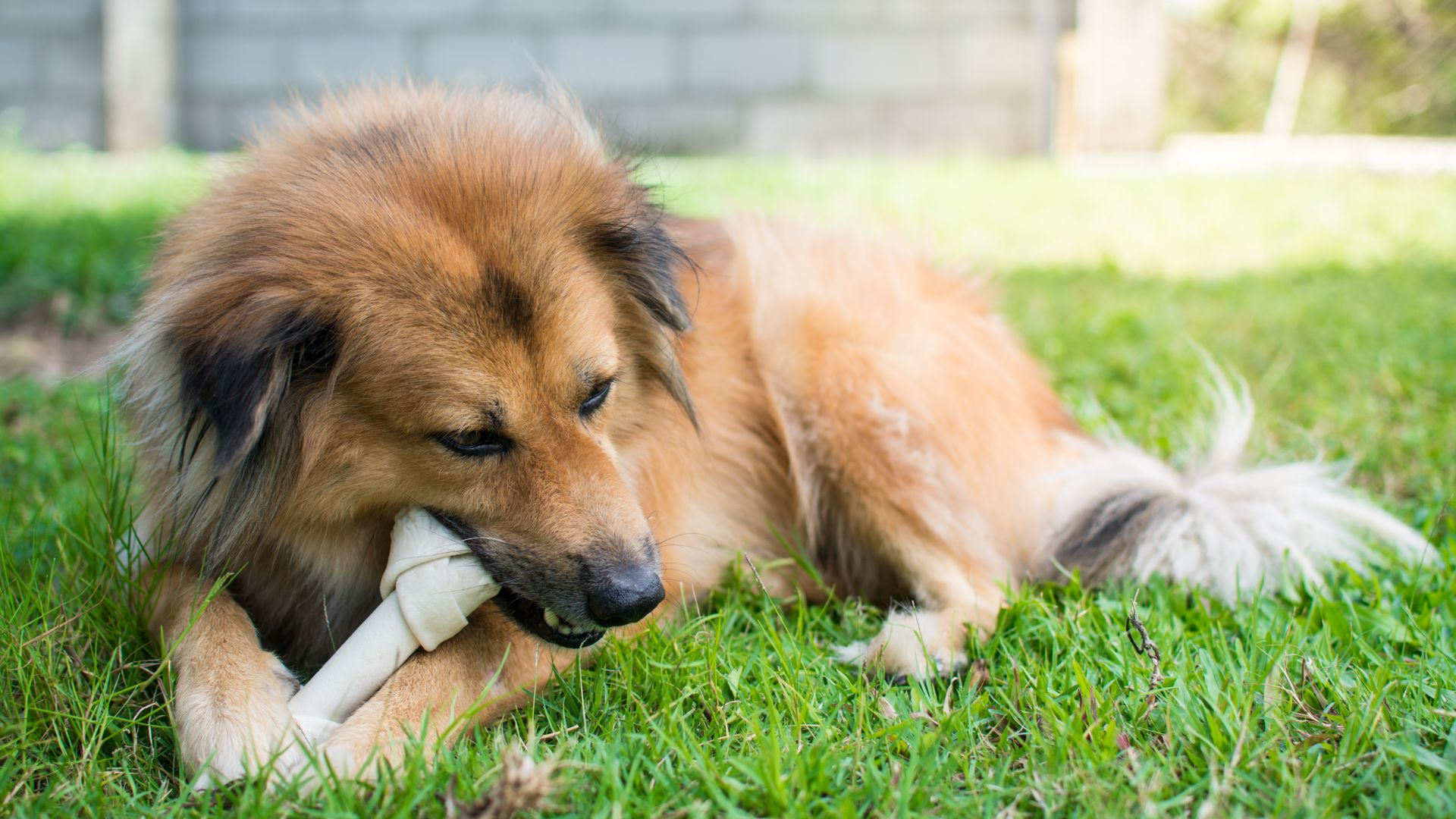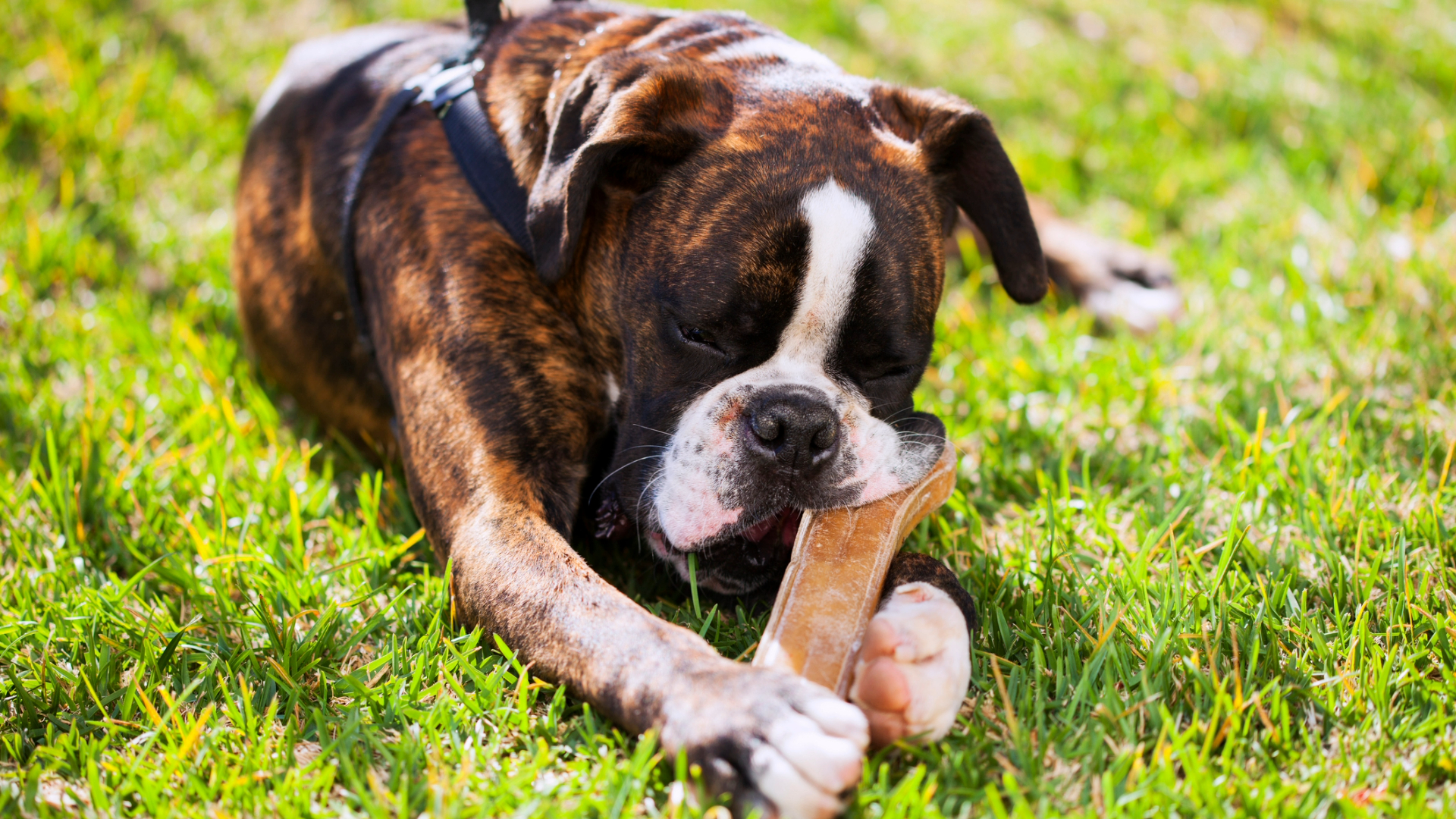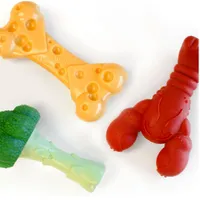Are Nylabones safe for dogs? A vet lays out the pros and cons of this popular chew toy
If you want to know if Nylabones are safe for dogs, you’ve come to the right place. We spoke to a vet to find out the answer.

If you want if Nylabones are safe for dogs, you’re not alone. Nylabones are non-edible flavored chew toys. They come in endless flavors, so chances are you’re pup has one that absolutely love.
With some pet parents loving these products and other pet parents advising against them it can be a little confusing and overwhelming trying to decide if this is a good product for your dog or not. They seem harmless enough. They come in popular flavors and they last longer than some of the best long lasting dog chews.
But are they actually safe for dogs? We spoke to vet, Dr. Jo Woodnutt, and found out the answer.
What is a Nylabone?
You'd be forgiven for thinking that a Nylabone is an edible bone. After all, the word 'bone' is baked right on into the name, plus, they come coated in flavoring, what could be more suitable for consumption than that?
Nylabone is a very unfortunate choice of name because it's actually a toy and not a food product. Created in the 1950s, Nylabones are made from a form of plastic called Nylon and then coated in delicious flavors, such as peanut butter, chicken or bacon to give them their delicious taste.
The whole purpose of creating the Nylabone was to create a toy for aggressive chewers that would help teach them appropriate chewing behavior. By coating the toy in flavors that dogs naturally find appealing, the idea is that your dog will go for their new toy rather than your clothing or furniture.
Separation anxiety in dogs is also quite a common issue, so some pet parents find that using Nylabones is a great way of soothing their hound when they’re home alone. As a non-edible chew, Nylabones come in a range of shapes, sizes, and flavors, and include rings that can be given to teething puppies.
Get the best advice, tips and top tech for your beloved Pets
Are Nylabones dangerous?
What our vet has to say...
Speaking to Dr Jo Woodnutt a qualified vet, she says, “The jury is out on this! Whether Nylabones are safe for dogs or not will depend a lot on your dog and their style of chewing. If your dog likes to eat things and has a powerful jaw, it’s possible they’ll swallow bits of Nylabone.”
She adds, “While the plastic is not in itself dangerous, if enough is swallowed it could cause a blockage (intestinal obstruction), which would require emergency surgery to remove. On the other hand, if your dog is a gentle chewer and prefers to rip things up rather than eat them, Nylabones may be safe.”
If you want to get your dog a Nylabone (and plenty of pet parents do!), then the most important thing is to use your common sense. Just like with any of the best dog toys, we recommend you inspect your dog's Nylabone regularly, looking for any signs of cracks and splinters. When it starts to look really worn, is close to breaking, or has started to break, replace it with a new one.
We could not get over how cute these food-shaped Nylabones are! These toys are made to support your dog’s dental health and are even durable for the most aggressive dog chewers.
A great way to avoid mistaking a Nylabone for an edible item is to carefully check what the product is made from before you buy it. Online retailers, such as Amazon, clearly list 'nylon' or 'plastic' in the material section of the product description, so taking a look at this will help prevent confusion.
You'll notice there are a lot of Nylabones on the market, so it's worth thinking through what you're primary purpose is for purchasing this toy. For example, some are great for teething puppies while others will do a brilliant job of keeping your canine companion's pearly whites in tip-top condition. Make sure you select the right Nylabone for your dog’s size, age, and needs.
What Nylabone has to say...
Here’s what the team at Nylabone have to say about picking out one of their products:
“It is important to select the appropriate chew toy type, size, and formulation based on your dog's age, breed, chewing style, and weight. The pressure exerted by a strong chewer's jaw is considerable, and when directed straight down can put tremendous (as much as 450 psi) stress on the dog's teeth. It is therefore recommended that nonedible chew toys be large enough to encourage chewing from the side rather than the top and bottom. If you have more than one dog in your household, select chew toys that are appropriate for your largest, strongest chewer.”
Any dog that’s been given a Nylabone should be supervised when using it. While the Nylabone has been constructed to make sure large chunks can’t be broken off, nothing is ever 100% safe and if your dog does snap off and swallow a large piece, they’ll need to be taken to the vet immediately.
Nylabone safety tips

1) Conduct regular checks: It’s a good idea to have a look at your dog’s Nylabone after each use. While that may sound like we’re being pedantic, regularly inspecting the chew toy will let you quickly catch if any pieces have been broken off. You’ll also be able to spot when the Nylabone is starting to wear down, and needs replacing.
2) Supervise your dog: Never leave your dog alone when they’re playing with their Nylabone. It can be frustrating when you’ve finally got some peace to have to keep watching them, but if a piece breaks off you’ll be able to move it out of their way so that it doesn’t present a choking hazard.
3) Proper storage: Being made of plastic, the Nylabone will be affected by the heat if it’s left out in the sun. When plastic melts, it releases toxic chemicals, so always store this toy away when not in use, preferably out of reach of your dog.
So, are Nylabones safe for dogs?
So there you have it, everything you need to know about Nylabones! Remember, non-edible Nylabones are no more dangerous than other chew toys when used under the proper supervision, but they are most definitely not to be ingested.
If you’re feeling concerned about getting your dog a Nylabone, but still need a toy that will hold up to an aggressive chewer, why not check out our guide on how to use Kong toys?
We’re huge fans of these hollow rubber toys, and they can be smeared with peanut butter, yogurt, canned pumpkin, or dog food, for a delicious mentally and physically stimulating treat.
Read next: Safe dog chews for aggressive chewers and are yak chews safe for dogs?

Dr Joanna Woodnutt specializes in helping clients understand their pets better. After graduating as a veterinarian from the University of Nottingham, Dr Woodnutt went on to practice companion animal medicine in the Midlands. She soon developed a love of consulting and helping clients with medical problems such as dermatology, behavior, and nutrition.

Kathryn is a freelance writer who has been a member of the PetsRadar family since it launched in 2020. Highly experienced in her field, she's driven by a desire to provide pet parents with accurate, timely, and informative content that enables them to provide their fur friends with everything they need to thrive.
Kathryn works closely with vets and trainers to ensure all articles offer the most up-to-date information across a range of pet-related fields, from insights into health and behavior issues to tips on products and training.
When she’s not busy crafting the perfect sentence for her features, buying guides and news pieces, she can be found hanging out with her family (which includes one super sassy cat and a kitten), drinking copious amounts of Jasmine tea and reading all the books.
She has written for a range of publications, including Fit&Well, Top Ten Reviews, LiveScience, Goodto, and Product Hunt.
- Alexis De LeaverDigital & Syndication Staff Writer

